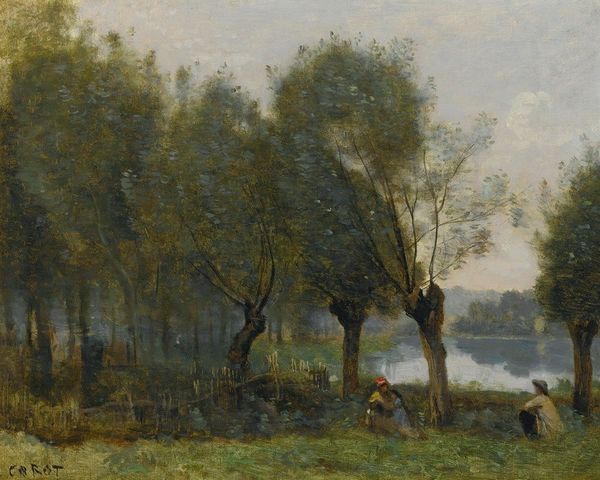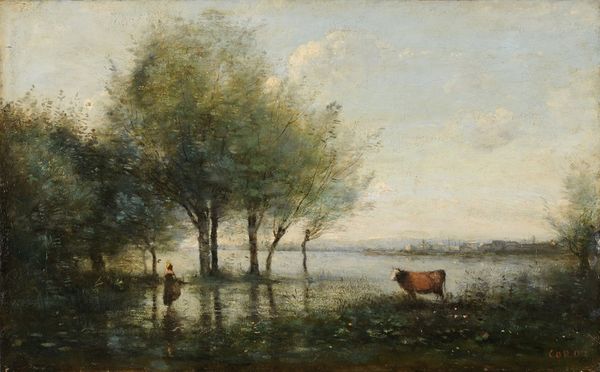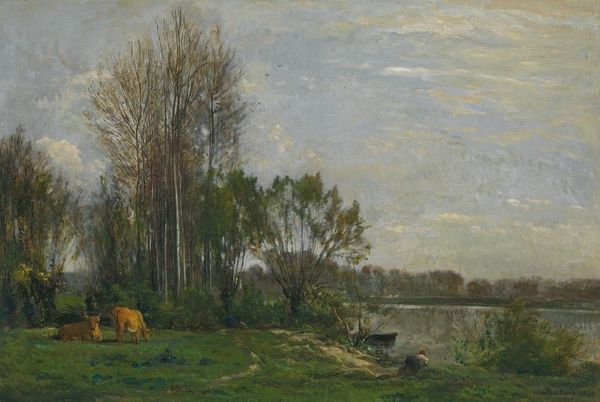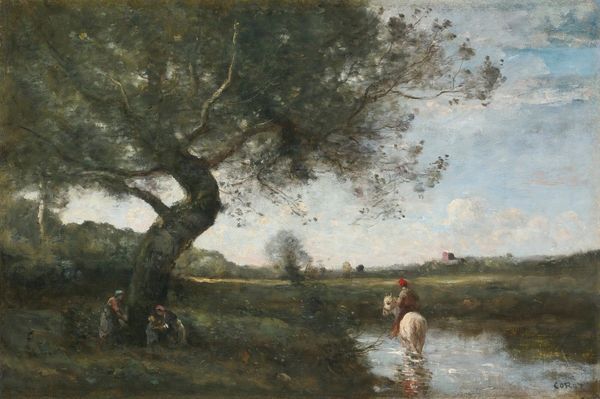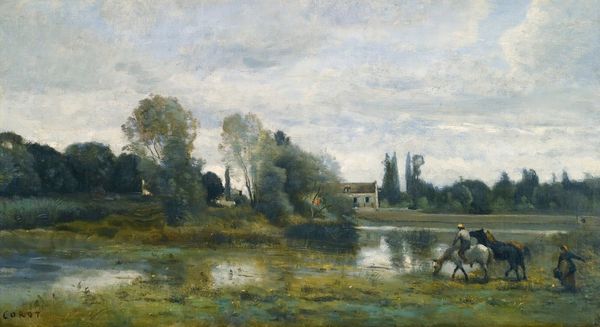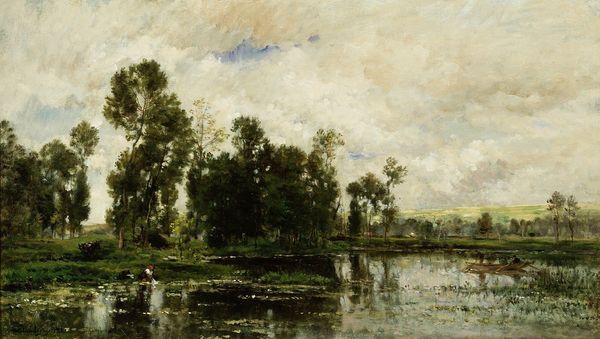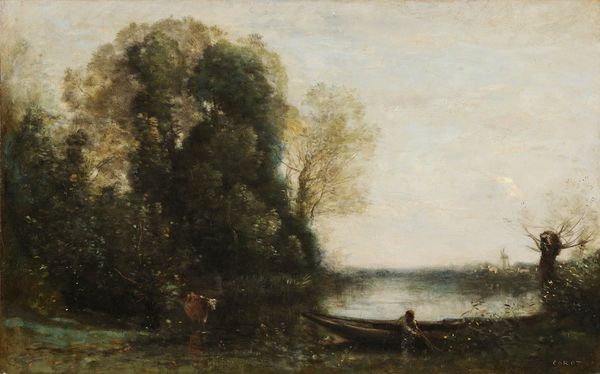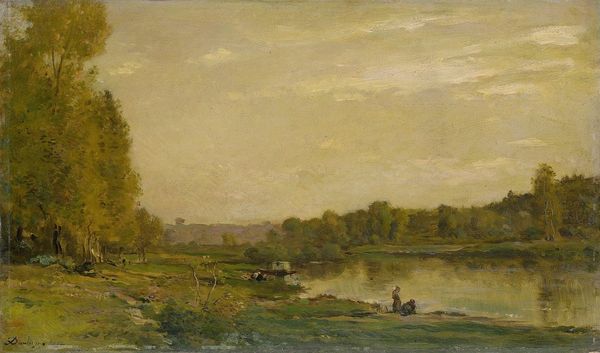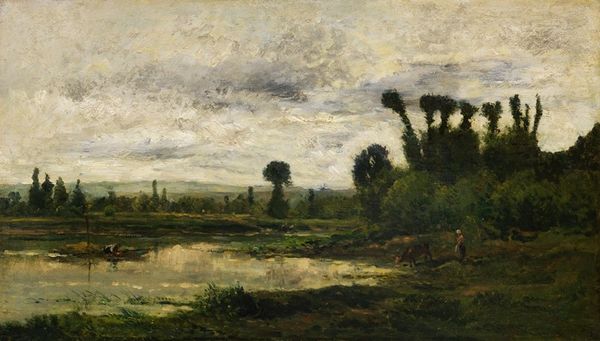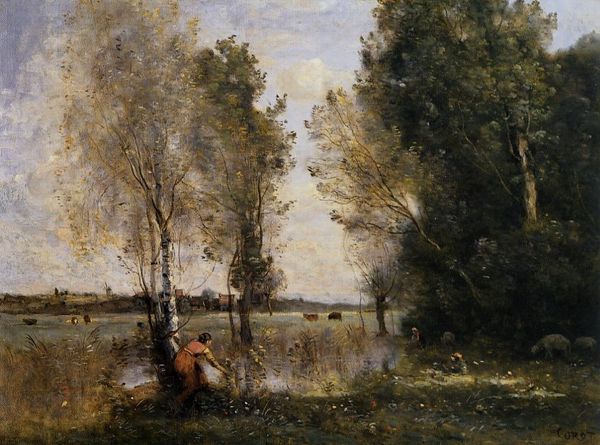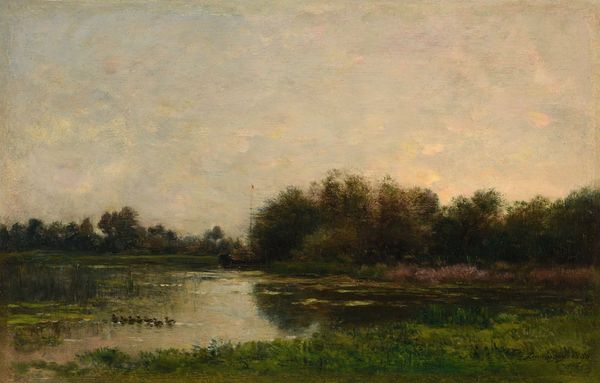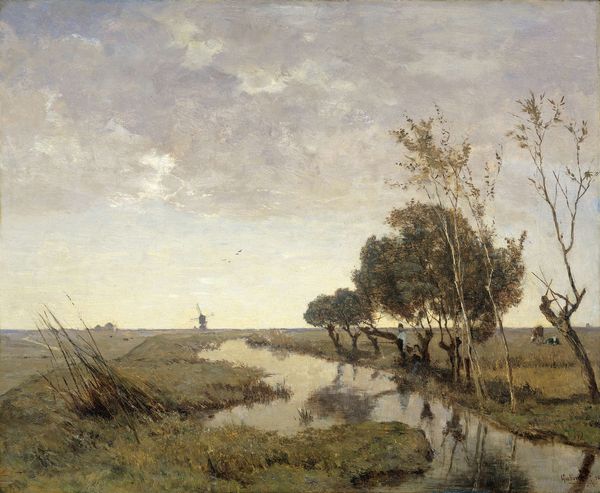
painting, plein-air, oil-paint, impasto
#
painting
#
plein-air
#
oil-paint
#
landscape
#
figuration
#
oil painting
#
impasto
#
romanticism
#
genre-painting
#
realism
Copyright: Public Domain: Artvee
Editor: This is Corot's "Arleux-du-Nord," an oil painting capturing a quiet, riverside scene. The soft light and hazy atmosphere give it such a dreamlike quality. What strikes me most is the serene stillness. What do you see in this piece? Curator: The stillness, as you note, is key. Beyond the visible scene, I see echoes of older landscape traditions and premonitions of impressionism, interwoven with Corot’s personal visual language. Note how the figures, seemingly at leisure, connect to pastoral ideals – a gentle nod to a simpler time. Editor: Pastoral ideals? Like, going back to nature? Curator: Exactly! The symbols are subtle but pervasive. Water often represents the subconscious or flow of time. The figures near the water's edge—they’re not just there, they’re mediating between us and that flow, between the present and cultural memory. Even the overcast sky tempers the intensity, suggesting reflection rather than bold action. Do you think it is pure coincidence? Editor: Probably not. That makes me consider those blurred houses in the background and the lone figure in the boat in a different light; they feel more weighted somehow. It all adds to the overall feeling of this collective memory, a landscape holding more than just trees and people. Curator: Precisely. Landscape, especially idealized landscape like this, acts as a stage for cultural identity, doesn’t it? We bring to it—and take from it—our hopes and our histories. Editor: So it becomes more than just what is depicted... the symbol of it all. It really makes me want to explore how later artists built on these symbols to convey other, related cultural themes. Thanks for the insights.
Comments
No comments
Be the first to comment and join the conversation on the ultimate creative platform.
